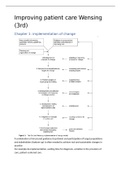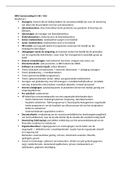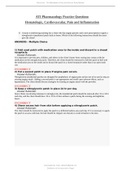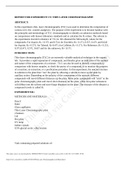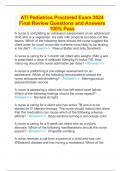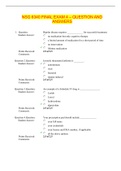Samenvatting
Improving patient care samenvatting boek
Dit is een samenvatting van het boek: improving patient care geschreven voor de master Klinische gezondheidswetenschappen aan de UU. Niet alle hoofdstukken worden behandeld in de samenvatting. Hoofdstukken in deze samnevatting: 1 t/m 5, 7 t/m 10, 19 t/m 22. Stuur gerust een berichtje bij vragen.
[Meer zien]
